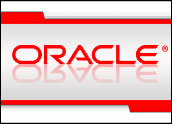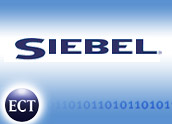
After meeting Wall Street’s expectations in its second quarter earnings announcement late Wednesday, on-demand customer relationship management specialist Salesforce.com turned its attention to two new projects.
Dubbed Mirrorforce and Smashforce, the projects are designed to strengthen the company’s technology and expand its Web services capabilities. Analysts said both initiatives are necessary for the continued growth of the company.
The CRM company said it plans to make an estimated US$50 million invested to expand its data centers via its Mirrorforce initiative. These critical IT systems run Salesforce.com’s online applications and store customer information.
Mirrorforce includes plans for two new data centers — one on each coast of the United States — in yet to be announced locations. The new data centers will augment its Silicon Valley, Calif., facility.
All About Redundancy
The company said the investment is necessary in order to allow it to provide real-time fail-over protection for its enterprise clients, who requested the upgrade. Expanding in-house systems means Salesforce.com will rely less on Sungard’s services to back up its applications.
AMI Partners analyst Laurie McCabe told CRMBuyer that Mirrorforce is all about redundancy. “Salesforce needs to provide this type of real-time failover protection, especially as it moves up stream to large enterprise customers,” she said.
The company said it has the hardware and software necessary to build the new facilities, which are scheduled to open when Salesforce.com launches the Winter 2006 version of its CRM tools early next year.
Welcoming Web Services
Salesforce.com also unveiled Smashforce, a new Web services initiative. Smashforce is a software-development tool kit built on AJAX technology. It is designed to allow clients using its Multiforce Web services desktop to create multiple Web services that share data and a single user interface.
Web services are nothing new — but it is new for Salesforce.com. The premise of Web services is the ability to mix and match components from different applications more easily. Web services also allows developers to build more tailored solutions.
The AJAX standard, which stands for Asynchronous JavaScript and XML, is a Web interface design development approach. Some developers tout its ability to allow programs to process Web-based requests more quickly than other frameworks.
Analysts said adding a Web services component was absolutely necessary to the continued growth of the CRM company.
“Many of its on-demand applications need to tie into a company’s existing systems,” McCabe said. “It’s critical that Salesforce has the ability to integrate and to create these types of component services because companies want more flexibility. Companies want something that meets their business needs as opposed to some vanilla solution.”
A Critical Challenge
But analysts said Salesforce.com is facing the same challenges as other large vendors with Web services initiatives: possible customer confusion. Although Web services promises that different applications will be interoperable regardless of the vendor, it seems different vendors have different flavors of Web services.
“The danger for any company pushing Web services is that customers might get confused about how to run these different applications together,” McCabe said. “That pitfall is still out there. It’s still hard for a lot of companies to really figure out what all the buzz means. They key is always in the execution.”





















































Social CRM
See all Social CRM